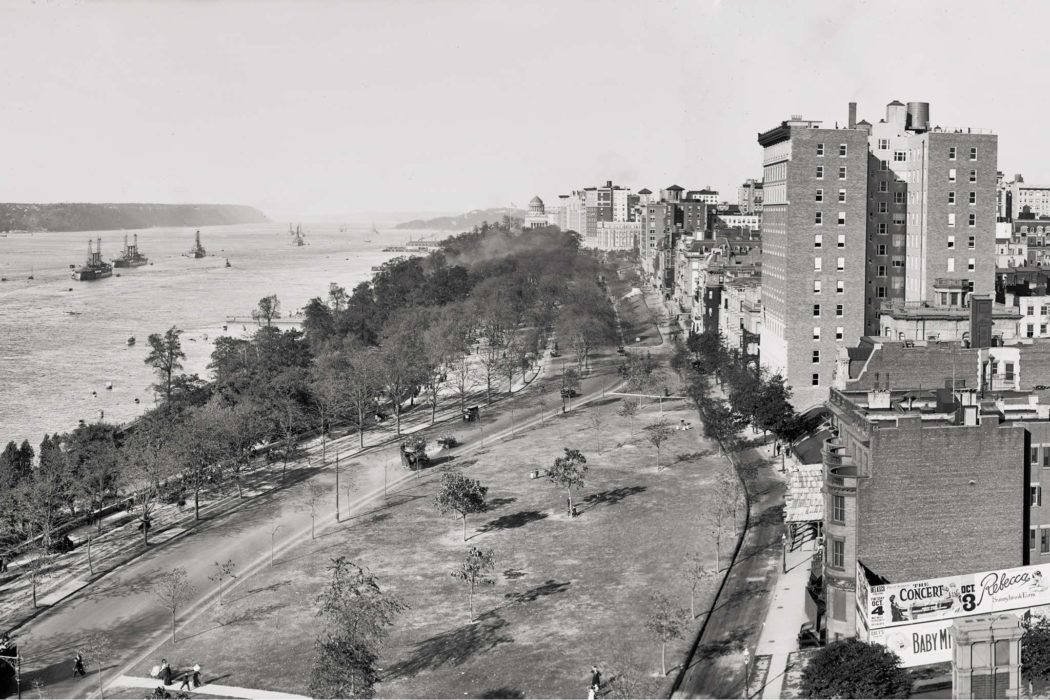BEFORE HE EVEN STEPPED off the ship, reporter Wendell Phillips Dodge had tried to peg him as a “Wise Man Out of the East.” Nixola Greeley-Smith, a columnist for the New York World, joked about his “regulation prophet’s whiskers,” adding to a chorus of early coverage that struggled to come to terms with the “exotic Easterner” in their midst. Yet quite quickly, America’s press realized that there was much more to ‘Abdu’l-Bahá. The Evening Mail’s editorial page commented on “the strange anomaly of an oriental mystic who believes in woman suffrage and modern development,” noting that he was “as much at home on Broadway, in New York, as he was in the lonely cell at Acre.”
On his second day in America, ‘Abdu’l-Bahá was whizzing over the Williamsburg Bridge from Manhattan to Brooklyn, then back again, taking in the rush hour traffic and the teeming masses, and telling one reporter that he was “beautifully tired.” It is unclear how long ‘Abdu’l-Bahá originally planned to stay in America, but after repeatedly extending his trip, he wound up staying 239 days. During this time he would travel the breadth of the nation, deliver over 400 public addresses, converse with thousands more in more intimate gatherings, grant hundreds of personal interviews, and receive coverage in more than 350 newspaper articles. Far from being an outsider looking in on American life, he succeeded in placing himself at the center of virtually all of the nation’s raging debates.

“The modern suffragette is fighting for what must be,” he said while still aboard the SS Cedric in New York Harbor. “The world in the past has been ruled by force, and man has dominated over woman by reason of his more forceful and aggressive qualities both of body and mind. But the scales are already shifting — force is losing its weight and mental alertness, intuition, and the spiritual qualities of love and service, in which woman is strong, are gaining ascendancy.”
In New York, prominent clergymen such as Percy Stickney Grant, a leading force in the Social Gospel movement, sought out ‘Abdu’l-Bahá and asked him to address their congregations. He shared their concern with social justice issues, and called on Americans to devote their time and means to helping the poor. In New York he also received invitations from peace advocates, and became a regular fixture in a network of leaders who shaped the movement in America, culminating in a major address at the Lake Mohonk Conference on International Arbitration.
In Washington, DC, it was the city’s elite that sought ‘Abdu’l-Bahá out: members of the House of Representatives, of the Senate, and of the Cabinet; Justices of the Supreme Court; officials of foreign embassies; and men of science such as Alexander Graham Bell and Admiral Robert Peary. But ‘Abdu’l-Bahá had more pressing issues to attend to in the nation’s capital. On April 23, he stood beside Louis Gregory, an African American lawyer and close personal friend, before 1,600 students, faculty, and guests at the nation’s leading black university — Howard University — and began a systematic assault on the nation’s color line that would last through to the end of his time in America. One week later the National Association for the Advancement of Colored People (NAACP) invited ‘Abdu’l-Bahá to address their Fourth Annual Conference in Chicago.
At Stanford University in Palo Alto, California, on October 8, ‘Abdu’l-Bahá rejected the idea of “survival of the fittest,” and the notion that aggression is intrinsic to human nature. Over the next two months he would offer Americans a more complex model of human nature, defining human beings by the capacities that differentiate us from animals, asserting our free will, and affirming our ability to consciously choose to serve one another altruistically.

“Having traveled from coast to coast,” ‘Abdu’l-Bahá said in Cincinnati on November 5, the day of the presidential election, “I find the United States of America vast and progressive, the government just and equitable, the nation noble and independent.” During his time here, he reached across political, religious, racial, class, and gender lines to engage Americans in a conversation about their collective future. He praised “the optimism of this great country,” and the “quick perception, intelligence and understanding,” of the American people. “They are not content to stand still,” he said.
On his final night in America, ‘Abdu’l-Bahá spoke to the Theosophical Society in New York. He argued that the universe had a purpose — perhaps the type of talk Americans had expected of him when he first arrived. Then he told them that narrow religious dogma had no place in the modern age, and that humankind must transcend its lower nature, mired in jealousy, hypocrisy, greed, and injustice, and cultivate a world of justice, sincerity, faithfulness, and mercy. And then he said goodbye.
“I have traveled to all the large cities,” he said, “speaking before various assemblages, proclaiming to them the oneness of the world of humanity, summoning all to union, harmony and oneness. I have indeed received the greatest kindness from the American people. I look upon them as a noble nation, capable of every perfection.” Tomorrow, he would leave for Europe. “My happiness is great,” he told them. “I shall never forget you.”






